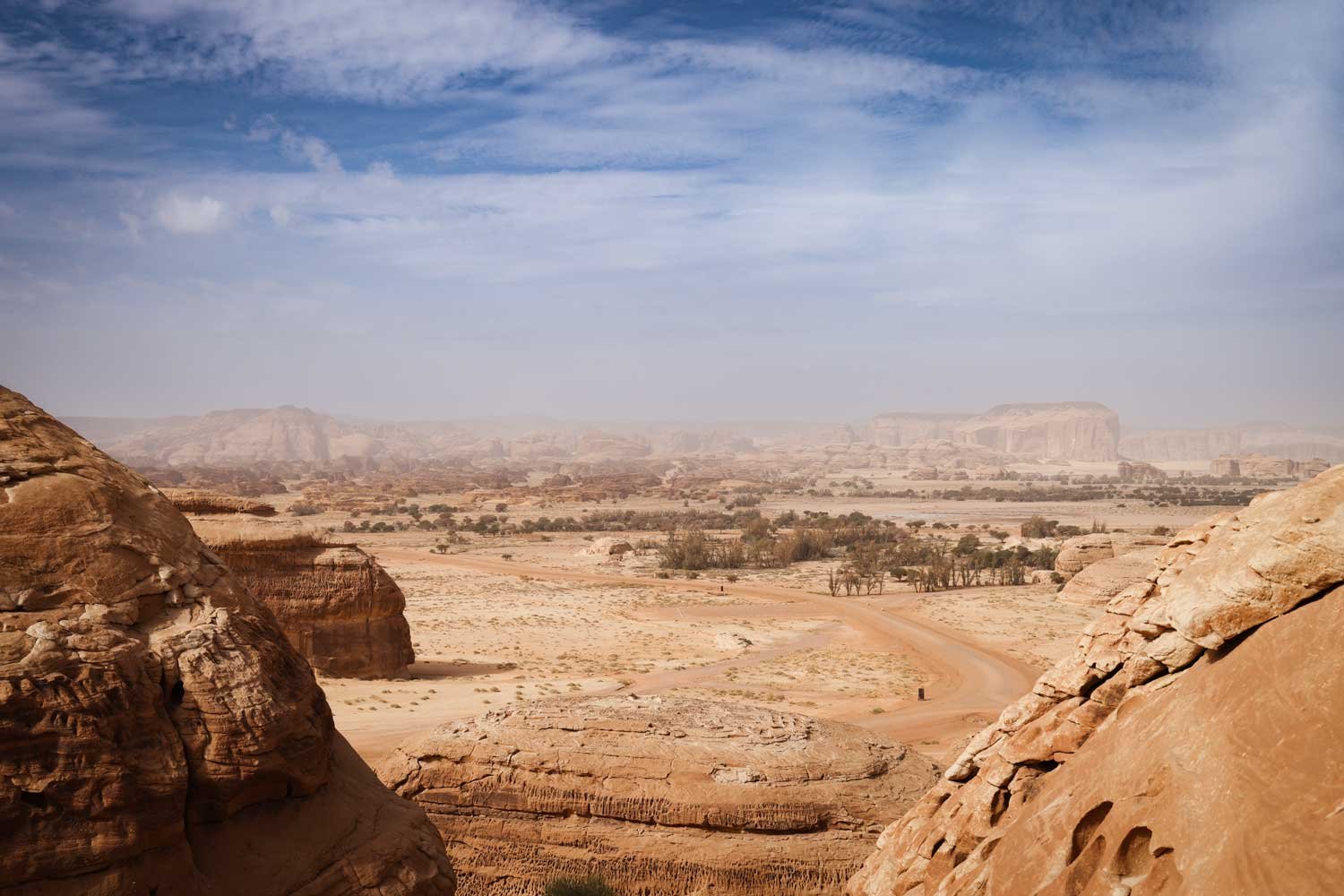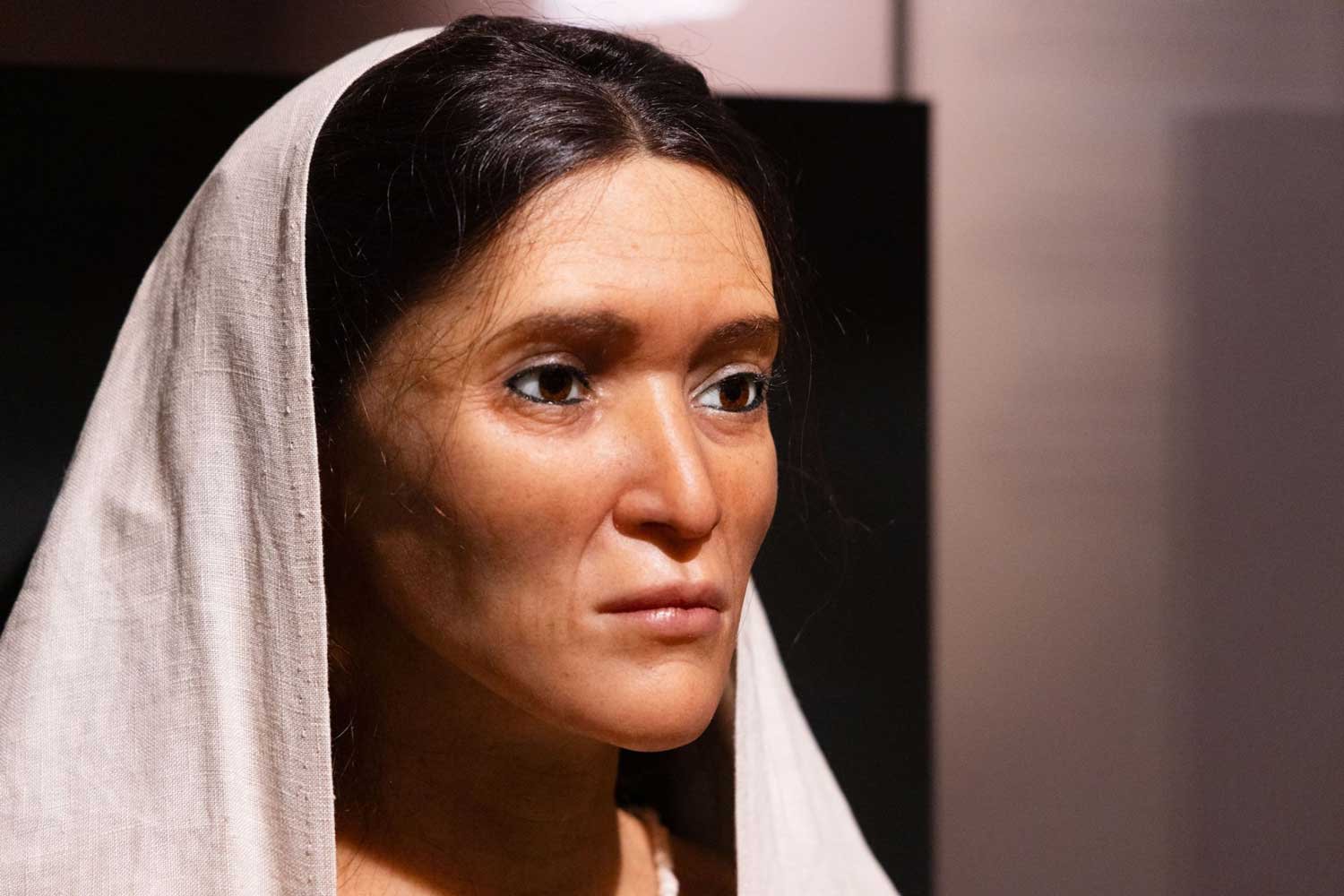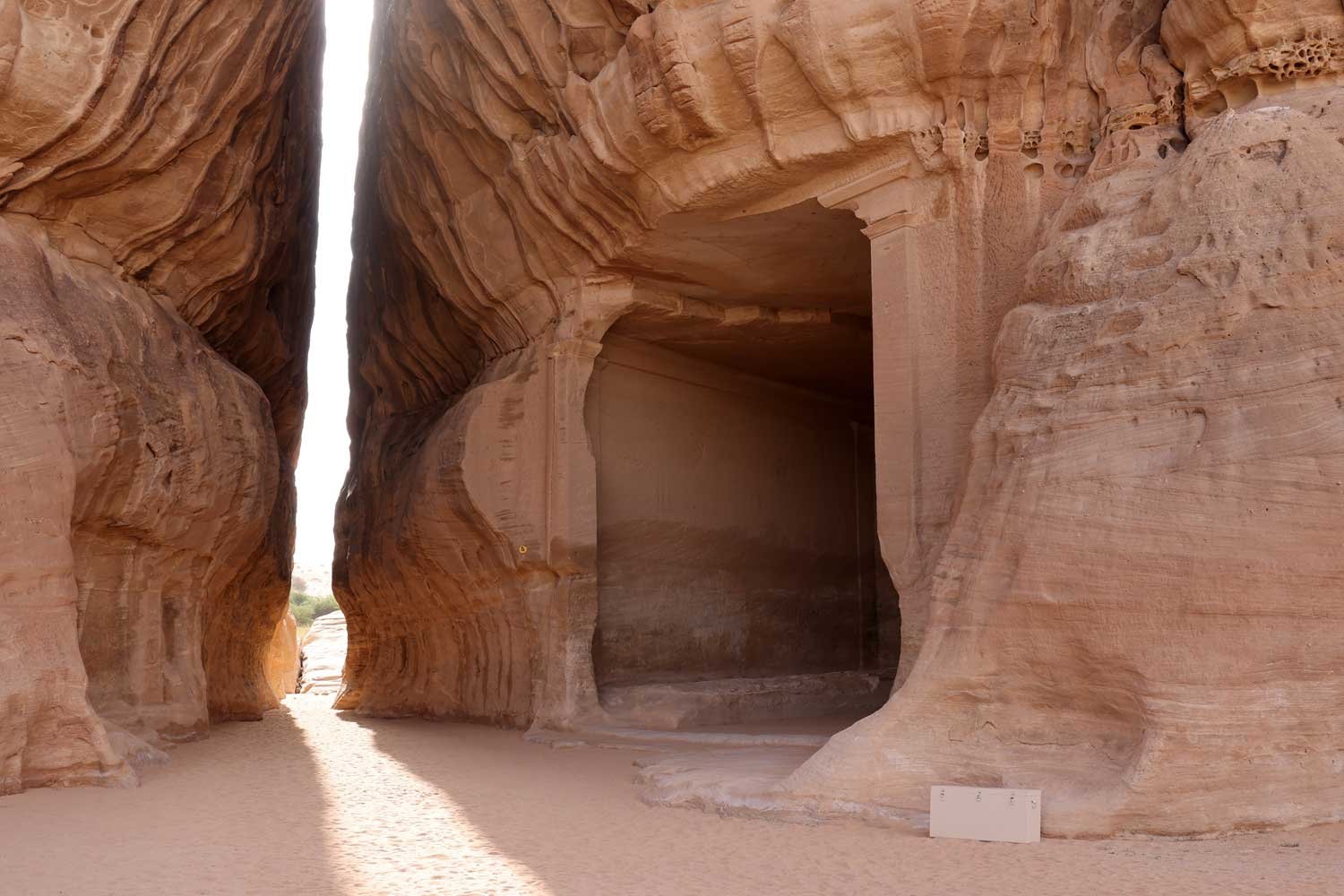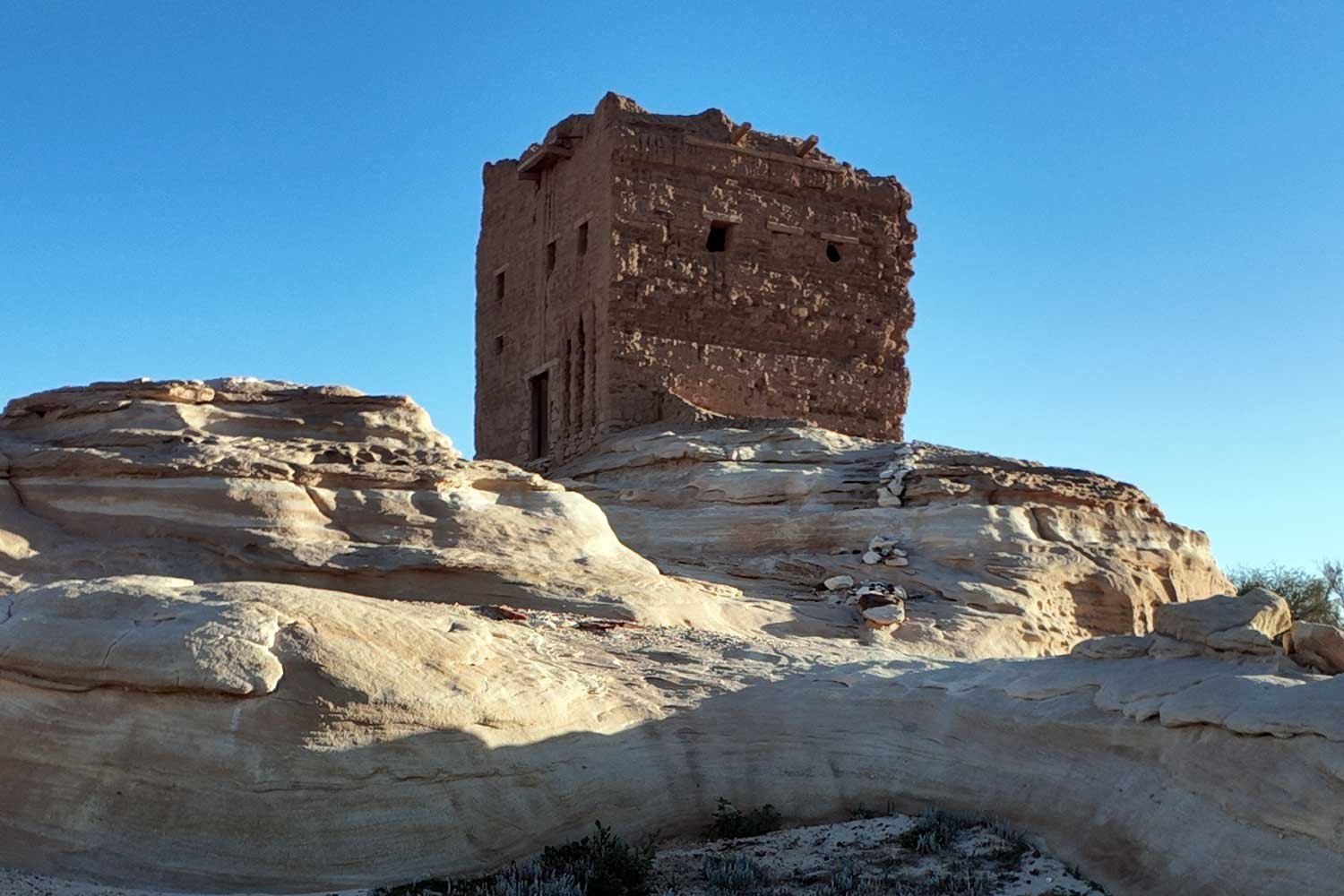The History of Hegra
From Ancient Nabataean Origins to Modern-Day Discoveries
Hegra is one of the most fascinating archaeological sites in ancient Arabia, and is located in the heart of the Hijaz mountain range in Saudi Arabia. Once a thriving city of the Nabataean Kingdom, Hegra was the second most important city after Petra. The Nabataeans, originally an Arab nomadic tribe, flourished between the 4th century BC and the 2nd century AD by controlling trade routes connecting southern Arabia to the Mediterranean.
The Archaeological Site of Hegra
The city spanned 1,500 hectares and featured a complex system of wells that enabled agriculture in a desert environment. During the reign of Aretas IV (9 BC – 40 AD), Hegra reached its peak. However, after the annexation of the Nabataean Kingdom into the Roman Empire in 106 AD, the city began to decline, gradually losing its strategic importance.
Abandoned during the Islamic period, Hegra was only rediscovered in modern times through archaeological studies.


Bronze Age (3rd millennium – 2nd millennium BC)
Some cairn tombs, that is burials covered by a heap of earth or stones dating between the end of the 3rd and beginning of the 2nd millennium BC, are the first remains of human activities detected on the Hegra site by previous expeditions, research and archaeological excavations. The fact that these structures have a funerary function does not allow to advance the hypothesis that the site was also used for sedentary occupation.
Hegra before the arrival of the Nabataeans (6th century – 2nd century BC)
Apart from Bronze-Age funerary structures, inscriptions in Dadanitic and Imperial Aramaic scripts in Hegra suggest a literate population between the sixth and second centuries BC, indicating an earlier settlement before the Nabataeans. Researchers propose two possible periods of occupation, though more excavations are needed for precise dating.
In the first period, mud-brick houses, walls, and painted ceramics were found in the central residential area, where water was easily accessible. The subsequent period, known as the Near Eastern Hellenistic period (third to second centuries BC), is evidenced by coins depicting an owl from Athenian tetradrachms.
Some undecorated tombs at the Jabal Banat necropolis, such as IGN25, IGN26.1, IGN28, and IGN30.1, are associated with pre-Nabataean populations. Tomb IGN26.1, connected to the Nabataean tomb IGN26, allows for observation of a pre-Nabataean burial chamber. The transition to Nabataean settlement seems to have been relatively peaceful, as no significant damage from the period is evident today.


Nabataean Period (1st century BC – 2nd century AD)
Hegra was a crucial centre for Nabataean trade. Located strategically in northwestern Saudi Arabia, the city controlled caravan traffic along ancient trade routes linking southern Arabia with Egypt, Syria, and the Mediterranean. These routes were essential for the trade of valuable goods such as spices, incense, myrrh, and textiles, with the Nabataeans, originally nomads, becoming key intermediaries in the trade of these commodities. Their control over trade routes and their expertise in water management enabled them to build flourishing cities like Petra and Hegra.
They first settled in Hegra at around mid-first century BC, but the site reached its zenith during the reign of Aretas IV (9 BC – 40 AD). Its imposing monumental tombs, carved into the sandstone, testify to the city’s importance and the prestige of the noble families who lived there. Hegra’s necropolis, with over 100 monumental tombs, represents one of the best-preserved examples of Nabataean funerary architecture. Nabataean inscriptions in Aramaic and architectural reliefs on the tomb facades display Egyptian, Greek, and Roman influences, highlighting the cultural fusion typical of the Nabataeans.
Roman Era (106 AD – 3rd century AD)
In 106 AD, Hegra became part of the Roman province of Arabia Petraea during the reign of Emperor Trajan. Its integration into this wider political and commercial network led to changes in regional trade routes, gradually reducing Hegra’s strategic role. Nevertheless, the city continued to be inhabited and retained a degree of vitality for some time. Evidence of Roman presence can be seen in the architecture and in some of the later tombs, which display stylistic features associated with Roman artistic traditions. However, the urban layout of Hegra did not undergo significant modifications during this period.


Islamic Period and Middle Ages (7th – 19th centuries)
With the advent of Islam in the 7th century, Hegra lost much of its significance, and the city was slowly abandoned. Despite this, its position along the pilgrimage route to Mecca ensured it retained a residual role as a stopover for pilgrim caravans, possibly authors of the numerous Arabic inscriptions carved in the Jabal Ithlib area. Despite this, Hegra’s commercial function had declined, and over the centuries, the site fell into obscurity.
Islamic legends surround Hegra, with references to the people of Thamud, who, according to Islamic tradition, were destroyed by God for their disobedience. This connection added a certain level of sanctity to the site but also contributed to its gradual neglect. Only in the 19th century did Hegra begin to emerge from obscurity thanks to early Western explorers.
Early European Explorations (18th – 19th centuries)
European interest in Arabia and its antiquities grew in the 18th century, with Swiss traveller Jean Louis Burckhardt among the first to visit Hegra. However, it was Charles Doughty (1876) and Charles Huber (1880) who first systematically documented the site. Their explorations attracted international attention, revealing the importance of Hegra’s ruins and the grandeur of its monumental tombs. Huber was particularly significant in laying the groundwork for future research, though he was assassinated during one of his expeditions.


Archaeological Excavations and Modern Discoveries (20th – 21st centuries)
In the early 20th century, Dominican fathers Antonin Jaussen and Raphaël Savignac conducted a series of studies on Hegra, documenting many of its tombs and inscriptions. These early works were essential in establishing a preliminary understanding of the site and its historical and cultural significance.
Between 2002 and 2005, a joint Franco-Saudi archaeological mission carried out more in-depth excavations, uncovering further details about Nabataean funerary practices, architecture, and society. Experts like Laïla Nehmé played a key role in these efforts, leading to new insights into the site, such as the influence of surrounding cultures and the establishment of a more precise chronology for the monumental tombs.

Hegra Railway Station
(20th century)
Railway Construction (1900 – 1916)
At the beginning of the 20th century, a railway line was built to connect Damascus with Medina, facilitating Muslim pilgrimages to Mecca and strengthening control over the region. The railway’s passage through Hegra briefly revitalized the city as a stopover, with stations and buildings from this period now part of its historical heritage.
Arab Revolt and Destruction (1916)
During the Arab Revolt, the railway became a strategic target, leading to significant destruction, including near Hegra. The remaining infrastructure, such as tracks and stations, serves as an important historical testament.
Historical and Touristic Legacy (21st century)
Today, the remains of the railway are a major part of Hegra’s tourist attractions, showcasing the region’s history from Nabataean times through the Islamic period and the events of the early 20th century, drawing visitors interested in its modern heritage.
UNESCO Recognition (2008)
In 2008, Hegra was designated a UNESCO World Heritage Site, becoming the first site in Saudi Arabia to receive such an honour. This recognition led to the promotion of Hegra as an international tourist destination, and the site’s opening to the public helped introduce the world to the significance of Nabataean civilization.

The History of Hegra
At the archaeological site of Hegra, the first human-made funerary structures were built.
Pre-Nabataean civilisations occupied the site and produced inscriptions in Dadanitic and Imperial Aramaic scripts, as well as mud-brick houses, ceramic utensils and tombs cut high up in the west face of the Al-Banat main massif.
Antigonus I Monophthalmus (the One-Eyed) leads an expedition against Petra
Aretas I rises as the 'tyrant of the Arabs.'
During the reign of Aretas II, the Hasmonean king Alexander Jannaeus captures Gaza, the key trading port of the Nabataeans.
Obodas I secures a decisive victory against Alexander Jannaeus in the Golan and another victory against Seleucid King Antiochus XI.
Aretas III, known as "Philhellene," captures Damascus.
The reign of Obodas II (III). His prime minister, Syllaios, plays a significant role, and in 25 BC, Nabataean forces under Syllaios join the Egyptian prefect Aelius Gallus in an expedition to southern Arabia, enhancing Red Sea trade.
Aretas IV Philopatris, who is the longest-reigning and most prosperous king, rules. Notably, his queen, Huldü, appears on coins, symbolizing an egalitarian relationship.
Rabbel II Soter, "the savior," reigns. His mother acts as regent for the first five years.
The Nabataean kingdom is annexed by Emperor Trajan and becomes the Roman province of Arabia, with Bostra as its capital, not Petra.
The last dated tomb in Hegra is created.
The last Nabataean inscription is carved in Hegra.
The last Roman coin is discovered in Hegra.
With the advent of Islam in the 7th century, Hegra lost much of its significance, and the city was slowly abandoned.
European interest in Arabia and its antiquities grown in the 18th century, with Swiss traveller Jean Louis Burckhardt among the first to visit Hegra.
Charles Doughty launched the documentation of the archaeological site of Hegra.
Charles Huber contributed to the documentation of the site and attracts international attention towards it.
The construction of the Railway was initiated during the mid-late Islamic period, with the aim of connecting Damascus to the holy city of Medina.
During the Arab Revolt in 1916, Arab forces, supported by the legendary Lawrence of Arabia, targeted the Hejaz Railway as part of their strategy to disrupt control over the region.
Dominican fathers Antonin Jaussen and Raphaël Savignac conducted a series of studies on Hegra, documenting many of its tombs and inscriptions.
A joint Franco-Saudi archaeological mission carried out more in-depth excavations, uncovering further details about Nabataean funerary practices, architecture, and society.
Hegra is designated a UNESCO World Heritage Site, becoming the first site in Saudi Arabia to receive such an honour.
The Hegra Conservation Project Begins.
Bibliography
Nehmé, L. (2015). Les Tombeaux Nabatéens de Hégra. Paris: Académie des inscriptions et belles-lettres.
Nehmé, L. (2021). Guide to Hegra: Archaeology in the Land of the Nabataeans of Arabia. Paris: Skira.
Nehmé, L., Sachet, I., Arnoux, T., Bessac, J.-C., Dentzer, J.-M., et al. (2006). “Mission archéologique de Madâ’in Sâlih (Arabie Saoudite): Recherches menées de 2001 à 2003 dans l’ancienne Hijra des Nabatéens.” Arabian Archaeology and Epigraphy. Singapore: Wiley.
Nehmé, L., Villeneuve, F., Al Talhi, D., Al Anzi, A., Bouchaud, C., et al. (2011). Report on the Second Season (2009) of the Madâ’in Sâlih Archaeological Project. Paris.
Al Talhi, D., Nehmé, L., Villeneuve, F., Augé, C., Benech, C., et al. (2014). Report on the Third Excavation Season (2010) of the Madâ’in Sâlih Archaeological Project. Riyadh: Saudi Commission for Tourism and Antiquities.
Nehmé, L., et al. (2014). Report of the Fifth Season (2014) of the Madâ’in Sâlih Archaeological Project. Paris: Orient & Mèditerranèe.
Alhaiti, K., Bouchaud, C., Delhopital, N., Durand, C., Fiema, Z. T., et al. (2016). Madâ’in Sâlih Archaeological Project. Report on the 2015 Season. Paris.
Nehmé, L., Bouchaud, C., Delhopital, N., Durand, C., Égal, F., et al. (2020). Report on the 2018 and 2019 Seasons of the Madâ’in Sâlih Archaeological Project. CNRS.
Nehmé, L. (2004). “Explorations Récentes et Nouvelles Pistes de Recherche Dans l’Ancienne Hégra des Nabatéens, Moderne Al-Hijr/Madâ’in Sâlih (Arabie du Nord-Ouest).” Comptes rendus des séances de l’Académie des Inscriptions et Belles-Lettres. Paris: Diffusion de Boccard.
Nehmé, L., al-Tahi, M.D., Villeneuve, F. (2008). “Résultats Préliminaires de la Première Campagne de Fouille à Madâ’in Sâlih en Arabie Saoudite.” Comptes rendus des séances de l’Académie des Inscriptions et Belles-Lettres. Paris: Diffusion de Boccard.
Margottini, C., Spizzichino, D., Boldini, D., Lusini, E., Crosta, G., Frodella, W., Beni, T. (2022). Atlas of the Geomorphological Processes and Rock Slope Instabilities Affecting the AlUla Archaeological Region.
Gallego, J.I., Margottini, C., Spizzichino, D., Boldini, D., Abul, J.K. (2022). Geomorphological Processes and Rock Slope Instabilities Affecting the AlUla Archaeological Region.
Jaussen, A., Sauvignac, R. (1914). Mission Archéologique en Arabie II, El-‘Ela, D’Hégra a Teima, Harrah de Terguk. Paris: Société des Fouilles Archéologiques.
Nehmé, L., Amoux, T., Bessac, J.-C., Braun, J.-P., Courbon, P., Dentzer-Feydy, J., Rigot, J.-B., Sachet, I. (2006). “Report on the 2003, Third Season, of the Saudi-French Archaeological Project at Madâ’in Sâlih.” ATLAL, The Journal of Saudi Arabian Archaeology. Riyadh: Deputy Ministry of Antiquities and Museums, Ministry of Education.
Nehmé, L. (2005). “Towards an Understanding of the Urban Space of Madâ’in Sâlih, Ancient Hegra, through Epigraphic Evidence.” Proceedings of the Seminar for Arabian Studies, vol. 5. Oxford: Archaeopress.
RCU Archive (2023). The Diwan 20231109. Digital media.
RCU Archive (2023). RCU-IGN17. Digital media.
RCU Archive (2023). RCU-IGN110. Digital media.
Healey, J.F. (1993). The Nabataean Tomb Inscriptions of Mada’In Salih. Oxford: Oxford University Press.




